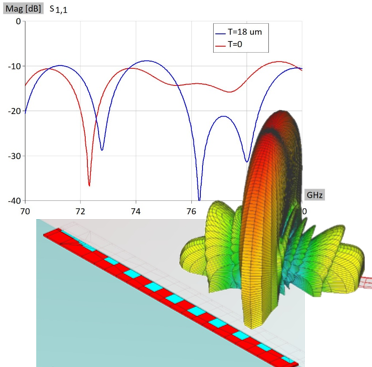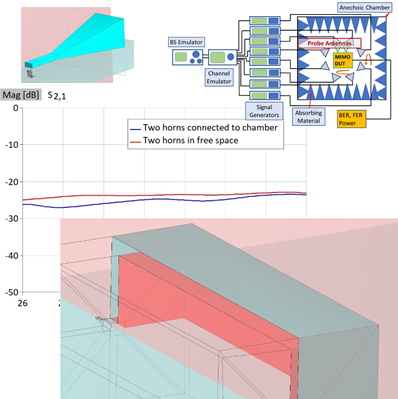WIPL-D will again participate as one of the exhibitors on The 13th European Conference on Antennas and Propagation – EuCAP 2019 which will be held in ICE Krakow Congress Centre, from 31st March to 5th April, 2019. We kindly invite…

EuCAP 2019, Krakow, Poland
Series-fed Travelling Wave Patch Array
A detailed convergence study of the series-fed travelling wave patch array is shown. The simulations are performed at 77 GHz in the WIPL-D Software suite – a full 3D EM simulation tool based on the method-of-moments. Simulated travelling wave patch…
Indoor Wi-Fi Antenna at 2.4 GHz
Near field results of indoor Wi-Fi antenna after simulating the models at 2.4 GHz are presented. The Wi-Fi antenna itself is positioned inside the room with brick walls. In addition, near field results for the model of the antenna in…
Validating IFA Design via Measurement
This application note presents a design of a printed inverted-F antenna (IFA) used in a radio-frequency identification (RFID) reader verified through the measurements. The IFA was built and simulated using WIPL-D Pro CAD environment – the highly advanced method-of-moments (MoM)…
Illuminating Reflectors by Analytical Feed via Field Generators
This application note presents the procedure for efficient definition of analytical feed in the WIPL-D software suite. The defined feed further serves as an excitation of the electromagnetic (EM) problem. The feature used is Field Generators. The procedure is described…
MIMO OTA in Anechoic Chamber
Common systems in the modern engineering to be investigated are multiple-input and multiple-output (MIMO) systems. Quite often, the performances of such systems are verified solely through measurement since the electromagnetic (EM) simulations are rather complex. One of the investigation methods…






